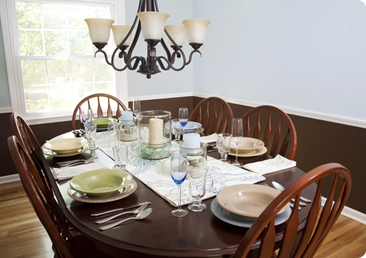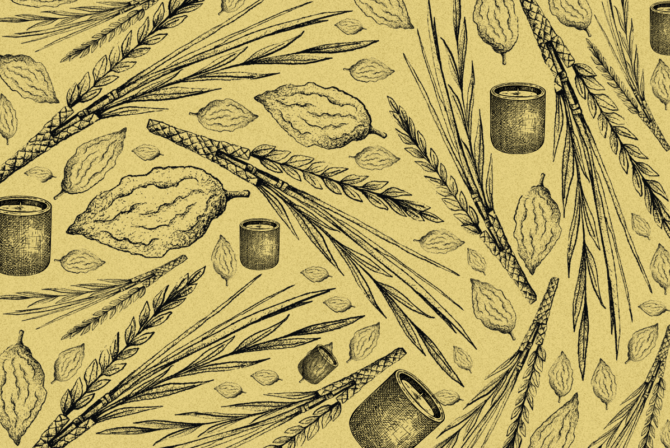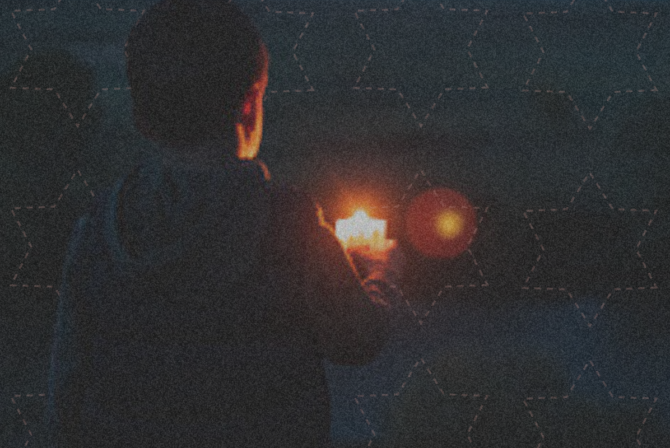Shabbat–the Jewish Sabbath– is a 25-hour period of rest lasting from just before sunset on Friday evening until nightfall on Saturday. The idea is to take a break from ordinary life, and focus on family, community, and spiritual growth. In our fast-paced lives it can be a welcome change to stop rushing from work to preschool to the grocery store…and instead enjoy a weekly reconnection with the people and ideas that really matter in life.
Lighting Candles
Shabbat’s arrival, on Friday night just before sundown, is marked with a special candle-lighting ceremony.
Most families light two candles, though there are varied practices. Some families give tzedakah (charity) as part of their candle-lighting ritual, and some give blessings to their children at this time. It is customary to light the candles, and then cover your eyes while reciting the blessing.
When you uncover your eyes and see the candles shining before you, the Day of Rest has officially begun. Feel free to greet others with a hearty “Shabbat Shalom!”
Shabbat Dinner
In many families, the central observance of Shabbat takes place on Friday night, around the dinner table. This is a time for family and friends to spend relaxed time together, reconnecting at the end of a busy week of work and school.
Traditionally, Shabbat dinner begins with a blessing recited over wine, called kiddush, which means sanctification.
After kiddush, it is customary to “break bread” with two loaves of challah bread. These loaves are covered with a cloth through kiddush. Jewish law requires one to first do a ritual handwashing, and then uncover the challah and recite the blessing over bread.
Some families also conclude their Shabbat meal with the Grace after Meals.
Set a Nice Table
In addition to Friday night dinner, on Saturday many families partake in a festive lunch and a pre-sundown dinner.
The menu at Shabbat meals doesn’t have to be fancy, but it is nice to include some foods that are special for Shabbat. You can check out traditional and not-so-traditional Shabbat recipes here–but do consider takeout if your week is hectic! You can also add some nice touches to your Shabbat table by picking up flowers on your way home from work, using a tablecloth reserved for Shabbat, or drinking out of goblets instead of glasses.
And though Shabbat celebration at home tends to be meal-focused, other Shabbat past-times include reading, playing board games, talking, walking, and napping. It can be a major relief to have time set aside for these calming activities that aren’t usually prioritized during the hubbub of the workweek.
In traditional homes, Shabbat also comes with a variety of restrictions–such as not driving a car, not speaking on the phone, not writing, and not cooking. The Torah prohibits “labor” on Shabbat; the complex rules of what is permitted on Shabbat and what is not are all based on rabbinic interpretations of what exactly qualifies as “labor.”
On Friday night and Saturday, special synagogue services are convened. The liturgy expresses thanks for the gift of Shabbat and celebrates the restful and pleasurable aspects of the day.
Farewell to Shabbat
At the end of Shabbat day, when three stars appear in the sky, it is time for the brief ceremony of havdalah (literally, separation or distinction). Havdalah can be recited in synagogue or at home. It is a short, soulful ritual that can captivate young children together with their parents. With a cup of wine, a box of spices, and a beautiful braided candle we recite blessings marking the transition between holy and mundane, light and dark, Shabbat and workweek. After havdalah, we wish one another “Shavua Tov!“–a good week.
Get Kveller’s beautiful, step-by-step guide to experiencing Shabbat on your own terms. Order The Kveller Shabbat Guide here.








